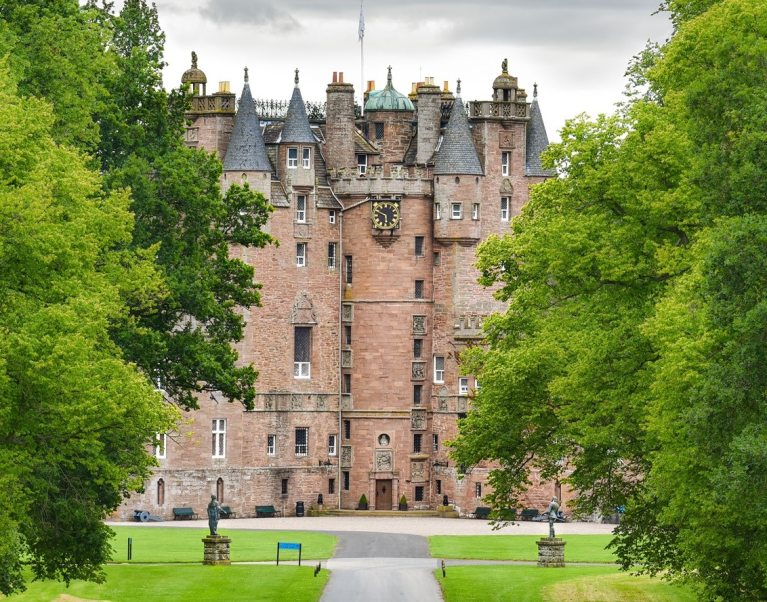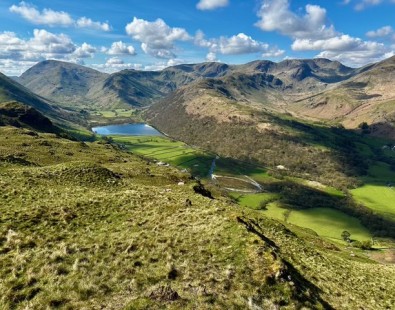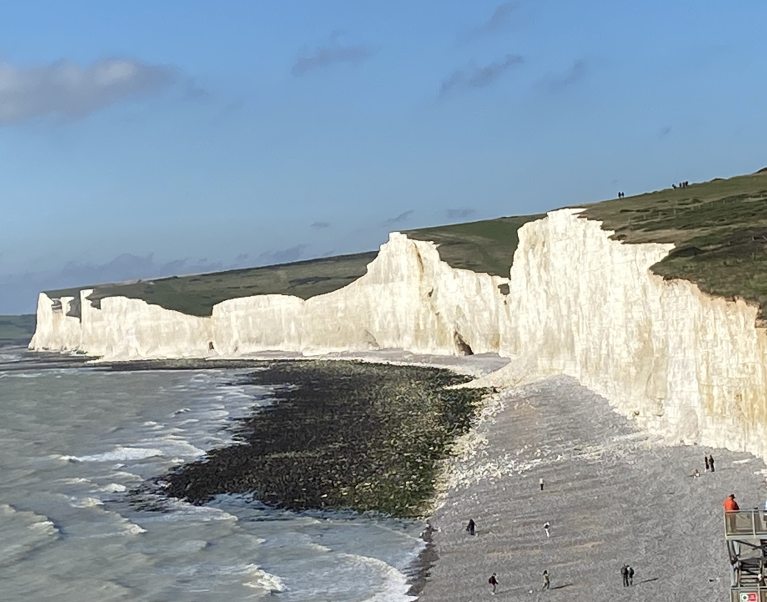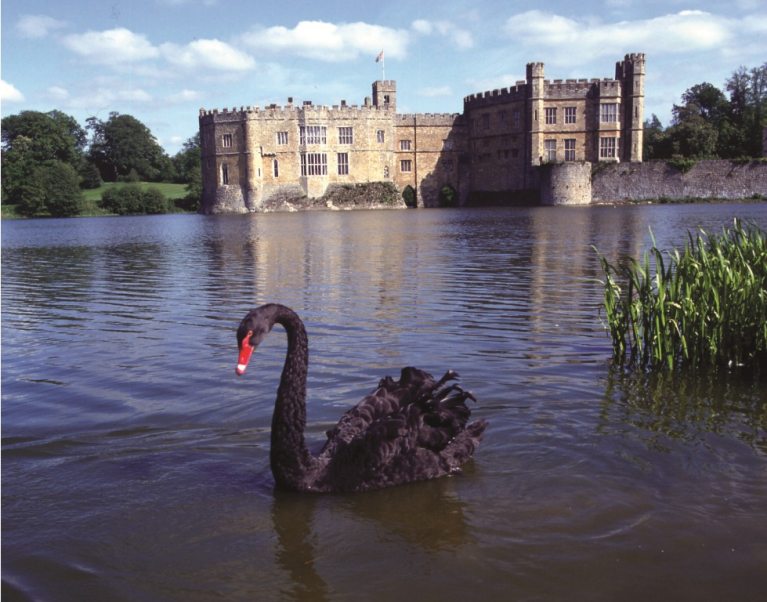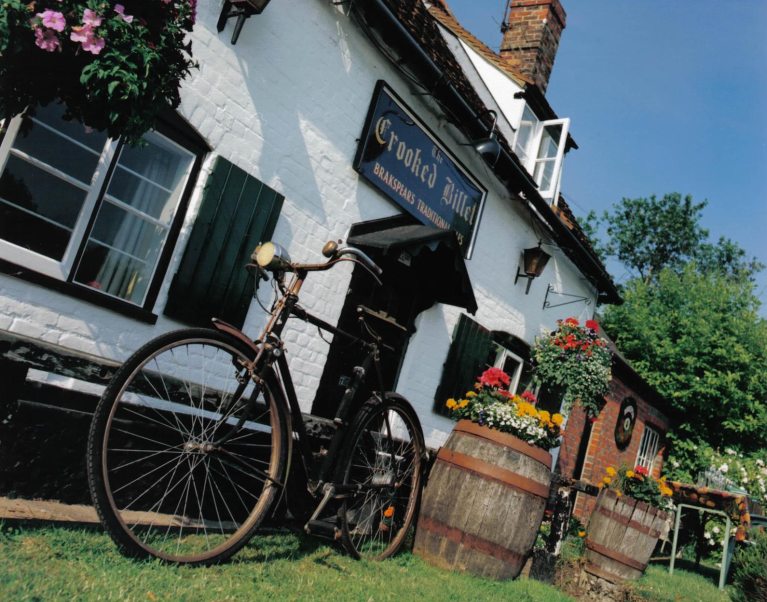Quirky Castles
26th November, 2025
Impressive Castles
Thanks to a few hundred years in the Middle Ages marked by ambitious barons, despotic kings, and border wars between the English, the Scots, and the Welsh, Great Britain is full of castles. Many of these are now romantic ruins, but more than a few have been given a new lease of life as hotels, museums, and film sets. Here are some of our favourites.
Langley Castle, Northumberland
Langley Castle is a small but perfectly formed castle built during a time of relative peace in medieval England (when the barons were too busy fighting the French to be fighting each other). Lying so close to the Scottish border, the de Lucy family home is brilliantly fortified, with towers and battlements complementing its charming estate. Only a stone’s throw south of Hadrian’s Wall and featured on one of our most popular walking tours, the accommodation at Langley Castle is the perfect base from which to explore the rolling landscape of the North Pennines. It also boasts one of the finest restaurants in North East England.
Glamis Castle, Angus
Before Macbeth was King of Scotland, and before he was Thane of Cawdor, he was Thane of Glamis. Almost a thousand years ago, the historical Macbeth murdered Malcolm II at Glamis Castle. The new castle on the site dates from around the time that Shakespeare’s play was written. You can follow in the steps of the regicide in Glamis’s woodland gardens, where hand-carved statues bring key scenes from Macbeth to life. Today, Glamis has a gentler royal association. Queen Elizabeth The Queen Mother, mother of the late Queen Elizabeth II, was born there in 1900, and spent much of her childhood at the castle’s country estate. She gave up her teenage years to nurse British soldiers during the First World War, when Glamis Castle was turned into a hospital. Family photos can still be seen when you walk around the castle.
Fonab Castle, Perthshire
Fonab Castle was built in the late 19th century for an aging colonel and is now a luxury hotel. Set in the eastern foothills of the Highlands in Perthshire, Fonab makes no bones about being a modern castle, and is equipped with fine dining, spas, and little pods by the river that you can eat in. Although Fonab is a fantastic luxury hotel, its surroundings are the real appeal. Set in the glen of the salmon-filled River Tummel, to the east of The Trossachs National Park the majestic Ben Vrackie looms over the estate, and from its summit on a clear day you can see Edinburgh, more than 70 miles to the south. If you fancy a tipple, the nearby town of Pitlochry has two whisky distilleries – including the smallest (legal) distillery in Scotland.
Pembroke Castle, Pembrokeshire
Medieval castles were built to police the lands around them: they kept the locals out, the nobles in, and were meant to leave the impression of financial and military might. So, of course the English built lots of castles in Wales in the Middle Ages – and the country is home to some of the finest fortresses in the British Isles. Even the wild west coast is no exception to this, and Pembroke Castle is an ancient and formidable example of Norman engineering and birthplace of Henry VII, founder of the Tudor dynasty and father of King Henry VIII. Beneath the castle is a spooky cove, where archaeologists found stone age human remains. And who can blame the stone age humans for burying their dead here? It’s a peaceful spot, and the perfect stop on a walking holiday through the beautiful Pembrokeshire Coast National Park, traversable by hundreds of kilometres of clifftop footpaths and home to puffins, seals, and (occasionally) dolphins.
Dover Castle, Kent
Dover Castle has long been an old-fashioned fortress. Built by Henry VIII to deter a French invasion during the Reformation, Dover Castle has been called into service time and again to defend the coasts of England. In the Second World War, it became a naval command centre, and the miraculous rescue of British and French troops from Dunkirk was coordinated from there. Today, the castle is home to a museum that commemorates this. Like Alnwick, Dover Castle has also enjoyed an afterlife as a film set, playing the Tower of London in Wolf Hall, the story of Thomas Cromwell’s rise to power as advisor to Henry VIII, and you even have the option to stay there on our Coast and Castles in Kent Tour.
Posted by: Will Garbett
Tags: Cycling holidays, Eat + drink, Hidden gems, History, Luxury specials, Walking holidays

